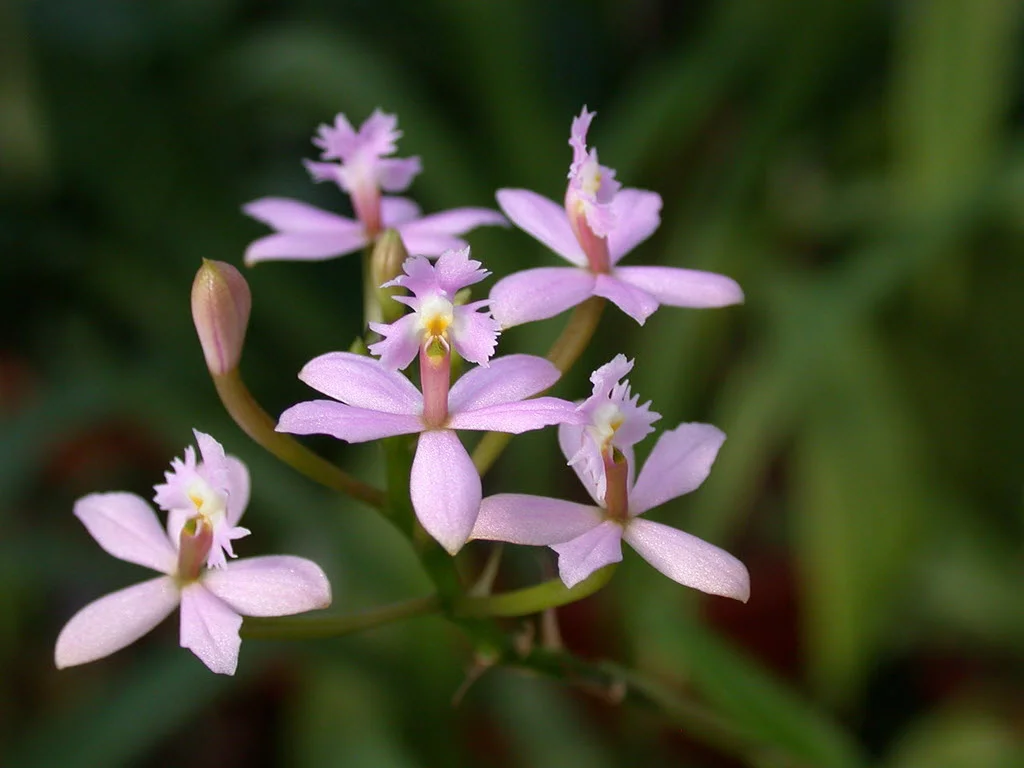Table of Contents
Pronunciation: nee-oh-fi-NET-ee-ah
Other Names: Samurai Orchid
Introduction
Wildly popular in Japan, the Neofinetia Orchid is considered by the Japanese to be the perfect orchid specimen from the flowers to the roots. Serious cultivators will pay upwards of $20,000 to $70,000 for the more rare varieties of this orchid, and in the mid-1990s, they paid upwards of $300,000 for a single orchid plant.
Neofinetia falcata
This orchid was also rumored to be one of the first Japanese houseplants in the mid-1600s, and it's prized for its unique flowers and the fragrant blooms it produces.
Temperature
Ideally, these orchids like slightly cooler temperatures year-round. The daytime temperatures should stay between 65°F to 70°F (18°C to 21°C). During the nighttime hours, temperatures can drop by as much as 15°F (-9°C) to 50°F (10°C) for optimal growing conditions.
This orchid can also tolerate brief periods of below freezing temperatures of 32°F (0°C), but they shouldn't stay there for extended periods, or they'll retain damage. They don't tolerate periods of temperatures over 75°F (24°C) either.
Light
Because these orchids like cooler growing conditions, they like a lot of bright sunlight to balance it out. You'll want to place your orchid in a location where it'll get the bright morning sunlight, but it'll avoid direct sunlight because they can sunburn easily.
If your orchid is in a spot where it gets direct sunlight, you may want to provide it with a shade structure like netting to help break up the sun. It may take a little trial and error until you find the perfect mix of sunlight for this orchid, but you want to watch it closely while you're shifting it in and out of the sunlight.
Water and Humidity
Neofinetia orchids like a consistent supply of water, and they don't like to dry out too much between watering. They won't use as much water due to their cooler temperatures, but you can plan to water them every two or three days as they're approaching dryness.
You can tell if they're starting to dry out by feeling the soil. If you can stick your finger into the soil and it's dry around an inch down, it's approaching dryness, and it's time to water your orchid again.
Feeding
These orchids like a well-balanced fertilizer mix once a week for optimal growth. If your orchid goes into a rest period due to cooler temperatures, you can reduce feeding it to every other week until you see new growth in the spring months.
It's a good idea to dilute your well-balanced fertilizer to half or quarter strength to prevent chemical burns to the orchid's roots and leaves. Stir a teaspoonful of fertilizer into a gallon of water for half-strength fertilizer. If you want to dilute it further, stir in a quarter teaspoon of your fertilizer into a gallon of water.
Potting
These orchids grow the best in smaller clay pots or in slatted baskets to allow good airflow. Their potting medium should be a light and airy mix that is fast-draining. It should have sphagnum moss to retain moisture, and a mix of charcoal, perlite, coconut husks, and fine fir-bark if you can get it.
These elements will ensure that the water drains away rapidly but that it retains enough moisture between watering to support growth. You want to repot your orchid every two or three years to refresh the potting medium, and this is best done in the early spring, so it has the growing season to re-establish itself.
Video
See a Neofinetia in bloom with Brad's video of his Neofinetia falcata orchid. (He says they smell like coconut!) This orchid guru talks about their care tips, too.
If you find this orchid beyond your budget, there are many other varieties that you can get for a good price. Check out our comprehensive list of the different types of orchids for more affordable varieties like the moth orchids or cattleyas.
More Orchid Species











